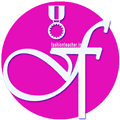30. Frock
Frock has been used since Middle English as the name for an article of clothing for men and women (see also clothing terminology). It is sometimes synonymously used for skirt. In British English and in Commonwealth countries the word is used for a girl's or woman's dress. In Australia it is frequently used this way, with the phrase "to frock up" meaning to wear a formal dress or gown for a special occasion.
Originally, a frock was a loose, long garment with wide, full sleeves, such as the habit of a monk or priest, commonly belted. (This is the origin of the modern term defrock or unfrock, meaning "to eject from the priesthood".)
The term has been continually applied to various types of clothing, generally denoting a loosely fitted garment:
From the sixteenth century to the early twentieth century, frock was applied to a woman's dress or gown, in the fashion of the day, often indicating an unfitted, comfortable garment for wear in the house, or (later) a light overdress worn with a slip or underdress.
From the seventeenth century on, a frock is a thigh- or full-length loose outer garment worn by shepherds, workmen, and farm workers in Britain, generally of heavy linen with a broad flat collar, now usually called a smock-frock. In some areas, this traditional frock buttons up the front in the manner of a coat, while in others it is a pullover style.
 In the eighteenth century in Britain and America, a frock was an unfitted men's coat for hunting or other country pursuits, with a broad, flat collar, derived from the traditional working-class frock. Late in the eighteenth century it came to be made with a cutaway front without a waist seam and this may have evolved into the standard dress coat with horizontally cutaway fronts worn for daytime wear by the early nineteenth century and from which the modern tail coat for white tie is derived. The great coat may similarly be historically derived from the frock as it similarly is single breasted, with a high and broad collar, waist pockets, and also lacked a waist seam early in its history as can be seen in an example in the Victoria and Albert Museum, London.
In the eighteenth century in Britain and America, a frock was an unfitted men's coat for hunting or other country pursuits, with a broad, flat collar, derived from the traditional working-class frock. Late in the eighteenth century it came to be made with a cutaway front without a waist seam and this may have evolved into the standard dress coat with horizontally cutaway fronts worn for daytime wear by the early nineteenth century and from which the modern tail coat for white tie is derived. The great coat may similarly be historically derived from the frock as it similarly is single breasted, with a high and broad collar, waist pockets, and also lacked a waist seam early in its history as can be seen in an example in the Victoria and Albert Museum, London.
The precise historical evolution of the frock after the second half of the eighteenth century is obscure, however it is likely that the frock was gradually supplanted by the frock coat in the early nineteenth century, eventually being relegated to evening dress. The frock coat in turn became cut away into the modern coat, giving us the two modern coats with tails.
A frock coat is a men's coat style of the nineteenth century, characterized by full skirts reaching to the lower thigh or knee. Despite the similarity in the name, the frock coat should be regarded as being a distinct garment quite separate from the frock. In the French language the frock coat is called 'une redingote' (from English "riding coat"), and so unlike the English language implies no immediate relationship to the frock which is called 'une fraque'. Indeed the modern French word for a tail coat is "une frac" which better betrays the historical relationship between the tail coat and the frock. In construction the frock coat could scarcely be more different from the frock for unlike the latter it is usually double breasted, lacks any pockets, lacks a high collar, has V-shaped lapels, is closely fitted and is constructed with a waist seam.
In India Frocks are the Women's Dress class major used teenagers and kids




EmoticonEmoticon